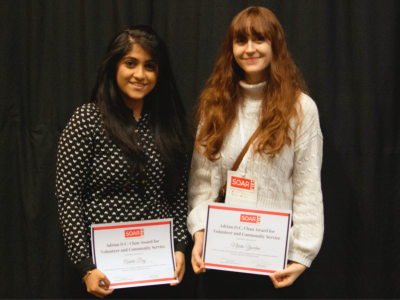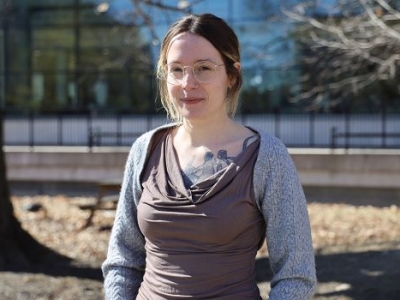 Sterling Somers is building training programs for SWAT teams, and teaching computers to imagine and create like humans.
Sterling Somers is building training programs for SWAT teams, and teaching computers to imagine and create like humans.
It’s all part of earning your PhD in cognitive science at Carleton University. Cognitive scientists study thinking in both humans and machines. Carleton’s program is multidisciplinary with many state-of-the-art research labs including the Science of Imagination laboratory where Somers is teaching computers to imagine.
The Science of the Imagination laboratory is dedicated to understanding human imagination using the tools of artificial intelligence. The idea is that creating intelligent computers has both applications to our daily lives and helps us better understand our own intelligence and creativity.
Somers is working on a computer program designed to imagine scenes the same way people do. The computer is given access to a database of images where the different objects are labelled. Using this data, Somers is programming the computer not only to create an image but also what else is likely to be in the scene with that image. For example, when asked to create a picture of a tree, the computer will imagine not just the tree but a tree with green leaves with the ground below it and a blue sky above it.
Somers and the rest of the Science of the Imagination team are also working on teaching the program analogy. For example, if the computer is asked to draw a raven but has no knowledge of what one looks like, it will take everything it has been told about a raven, realize it’s similar to a crow, which it can identify, and imagine what a raven looks like based on this, explains Somers.
“The exciting thing is to have a computer create a scene that is both creative and makes sense to the human user,” says Somers.
The program has applications in the generation of virtual environments for training, education and entertainment. One example could be the building of online worlds like Second Life, explains Somers. Whereas all the details of an online virtual world are currently written by the programmer, in the future, computers could imagine those ever expanding worlds on their own.
Somers is also working on his thesis project, understanding how we explore various 3D environments. He is programming computer models that give a full overview of different building structures and how things, such as type and amount of furniture and where the doors and windows are, effect the human movement in the space.
Results of this project will be used by SWAT teams, firefighters and other emergency responders in training exercises. Somers explains that the program will, for example, help simulate the best way to divide firefighting teams and enter burning buildings under various conditions.
Cognitive science demands an interdisciplinary approach. Carleton PhD students must take classes in a variety of fields including linguistics, neuroscience, philosophy and psychology. Somers earned his undergraduate degree in philosophy and continues to publish articles in that discipline.
What’s next for Somers? He hopes to make research his career. “I enjoy putting things together is a new way. Now that I’ve had a taste, I really don’t want to give it up.”
–Written By Shannon Wilmot
Thursday, December 22, 2011 in Grad Student Research, News
Share: Twitter, Facebook




